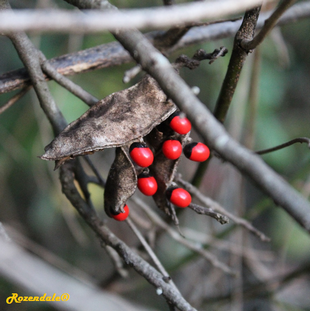Description and Uses
Abrus precatorius (Jequirity) is a
tropical
vine from
Caribeans . It is mainly grown for its
poison herbicide crops
, which have a
long shelf life. The crop is harvested by
hand picking. It starts flowering after
0 -
0 years. The yield will be
{missing data}, but in its top season there will be a yield of
{missing data}. Other crop types include;
oil, ornamental, poison herbicide, . The
{missing data} is used as
{missing data} . The
{missing data} is used as "
{missing data} " with
{missing data} ({missing data} -
{missing data}) as its significant
phytochemical. There is
{missing data} extracted by
{missing data} from the
vine's
{missing data} yielding
{missing data} -
{missing data} oil. The
vine's wood is called
{missing data} and has a density of
0 -
0 kg/m³. Regarding firewood production the
vine's growing speed is
medium, it's energetic value is
0 ckal/kg and the wood's drying speed is
{missing data}. After
1 years the
vine can be totally removed as it reached its commercial and ecological goal.
Abrus precatorius has a lifespan of
10 years.
Environmental limitations
The vine is
4 meters tall with a crown of
1 meters wide. The
vine prefers a planting distance of
100 cm and a row distance of
100 cm. It is
fast growing and
partial shade tolerant.
Abrus precatorius has a
deep root-system and it has symbiotic associations with the
fungi
(endo-mycorrhiza). It is
able to fix nitrogen moderately with
"Microbacteriaceae bacteria. The name(s) or string of bacteria include(s)
"not applicable ". The
vine's flower-morphology is
hermaphroditic and is pollinated by
bees.
Abrus precatorius is
{missing data} and
{missing data} and has
no thorns.
Abrus precatorius thrives in an altitude of
500 to
1500 meters above sea-level
(tropical). The minimum temperature is
0°C; optimally between
20 -
30°C. The optimal rainfall is
1450
mm/year. Without irrigation the annual rainfall should be between
650 -
1600mm (L/m²). The optimal soil-pH is between
6.0 -
8.0 in a soil texture of
loam. To salt it is
{missing data} to wind
{missing data} and to fire
{missing data}.
Pests and Diseases
Abrus precatorius is susceptible to the following pests:
. And it's susceptible to the following diseases:
(missing data) ,
,
.
Seed Propagation
Seeds are
{missing data} and can be stored for
0 months. There are approximative
0
seeds/kg. The seeds can be propagated as followed:
{missing data}






